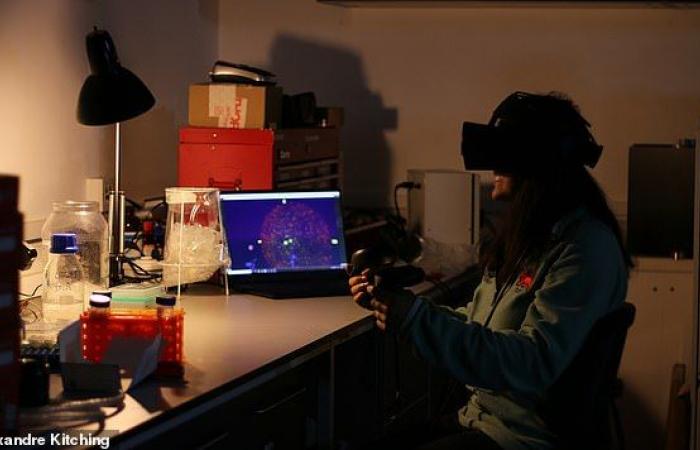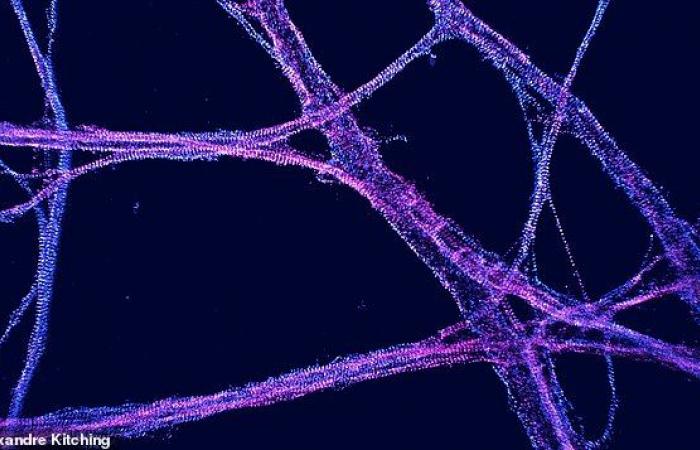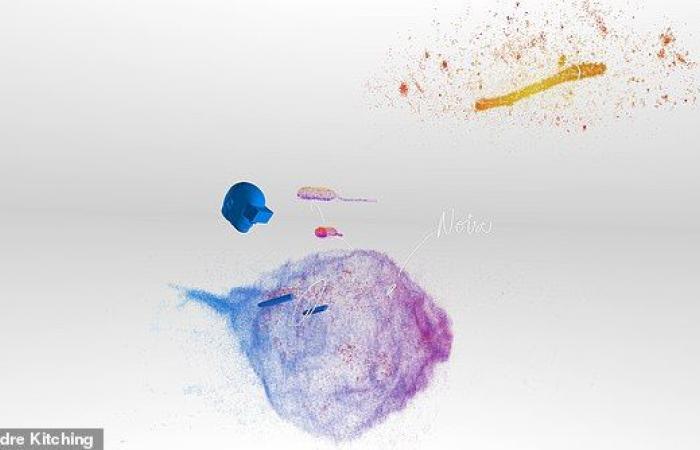A new virtual reality system has been created that allows doctors to take a Google Street View-like walk through cells in the human body.
It is hoped that the technology will allow researchers to analyze individual cells and gain a deeper understanding of the fundamental problems in biology.
Scientists from Cambridge University created the vLUM software with the 3D image analysis company Lume VR using high-resolution microscopy data.
The team says it was designed to help researchers develop new therapies for diseases by understanding how they spread in the body.
The software enables scientists to visualize and analyze data in virtual reality to study everything from individual proteins to entire cells.
Anouska Handa (PhD) analyzes her data in vLUM. The software enables users to walk through cells in the human body using data captured using super-definition microscopy
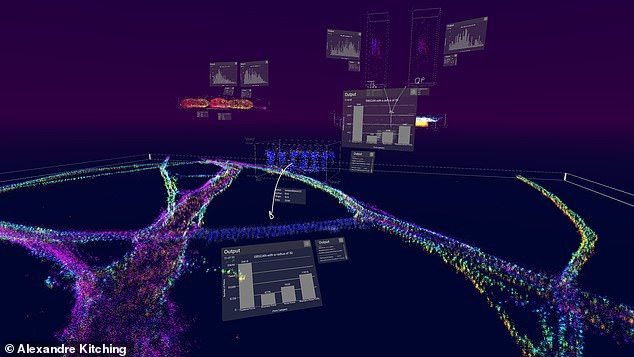

The DBScan analysis is performed as a mature neuron in a typical vLUME workspace. Researchers can visualize their own 2D data in a 3D environment
High-resolution microscopy, which was awarded the Nobel Prize for Chemistry in 2014, makes it possible to use clever tricks of physics to obtain images in the nanoscale in order to circumvent the limits imposed by light diffraction.
This has allowed researchers to observe molecular processes as they happen.
One problem, however, was the lack of ways to visualize and analyze this data in three dimensions.
“Biology happens in 3D, but until now it has been difficult to interact with the data on a 2D computer screen in an intuitive and comprehensive way,” said Steven F. Lee.
“It wasn’t until we saw our data in virtual reality that everything came together,” said Lee, study director at the Department of Chemistry at Cambridge.
The vLUME project began when Lee and his group met the founders of Lume VR at a public engagement event at the Science Museum in London.
While Lee’s group had experience in high-resolution microscopy, Lume’s team specialized in spatial computing and data analysis.
Together they were able to develop vLUME into a powerful new tool for examining complex data sets in virtual reality.
“VLUME is revolutionary imaging software that brings people into the nano range,” said Alexandre Kitching, CEO of Lume.
‘It enables scientists to visualize, question, and interact with biological 3D data in real time in a virtual reality environment in order to find answers to biological questions faster. It is a new tool for new discoveries. ‚
Viewing data in this way can spark new initiatives and ideas, the team said.


High-resolution microscopy, which was awarded the Nobel Prize for Chemistry in 2014, makes it possible to use clever tricks of physics to obtain images in the nanoscale in order to bypass the limits of light diffraction
For example, Anoushka Handa – a PhD student in Lee’s group – used the software to image an immune cell taken from her own blood.
She could then stand in her own cell in virtual reality and say, “It’s amazing – it gives you a completely different perspective on your work.”
The software enables the loading of multiple data sets with millions of data points and finds patterns in the complex data using integrated clustering algorithms.
These results can then be passed on to employees around the world using image and video functions in the software.


Spectral framework in neurons that researchers map into vLume. The team can view data from a microscopy study in 3D using a virtual reality headset
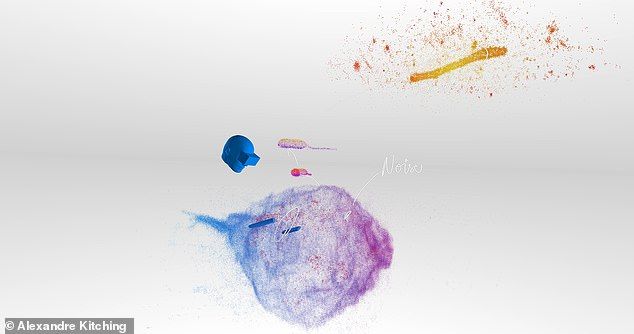

The blue dot in the middle is the representation of a user examining a single whole T-cell in vLUME
“Data generated with high-resolution microscopy is extremely complex,” said Kitching. “For scientists, analyzing this data can be very time-consuming.”
“With vLUME, we have succeeded in considerably reducing this waiting time and enabling faster tests and analyzes.”
The team uses vLUME mainly with biological data sets such as neurons, immune cells or cancer cells and is currently investigating how antigen cells trigger an immune response in the human body.
“By segmenting and viewing the data in vLUME, we were able to quickly rule out certain hypotheses and suggest new ones,” said Lee.
This software enables researchers to examine, analyze, segment and share their data in new ways. “All you need is a VR headset,” Lee said.
Details are published in the journal Nature Methods.
VIRTUAL REALITY EXPLAINED
Virtual reality is a computer-generated simulation of an environment or situation.
- It immerses the user by giving them the feeling of being in the simulated reality through images and sounds
- For example, in VR you might feel like you are climbing a mountain at home
Virtual reality is the term used to describe a three-dimensional, computer-generated environment that a person can explore and interact with.
This person becomes part of this virtual world or is in this environment and can manipulate objects there or carry out a series of actions.
How is virtual reality achieved?
Virtual reality is usually implemented using computer technology. There are a number of systems used for this purpose, such as: B. headsets, omnidirectional treadmills and special gloves.
These are used to stimulate our senses together and create the illusion of reality.
These were the details of the news With the new virtual reality software, scientists can “walk” into cells for this day. We hope that we have succeeded by giving you the full details and information. To follow all our news, you can subscribe to the alerts system or to one of our different systems to provide you with all that is new.
It is also worth noting that the original news has been published and is available at de24.news and the editorial team at AlKhaleej Today has confirmed it and it has been modified, and it may have been completely transferred or quoted from it and you can read and follow this news from its main source.

